The history of music videos in Uganda
By Edgar R. Batte
At any time on any given day, a music video will enjoy airplay on one of the local television stations in Uganda. The trend is that an artist will release an audio version of their song at the same time as a music video because the video is a good promotional tool for the song. Over time, music videos have become central to the Ugandan music industry. This text provides an overview of the subject.
 Video Director Sasha Vybz during filming. Photo: www.chano8.com
Video Director Sasha Vybz during filming. Photo: www.chano8.com Radio&Weasel. Photo:www.radioandweasel.com
Radio&Weasel. Photo:www.radioandweasel.com
1980s
Veteran of the Ugandan industry, including videographer Mustaque Abdallah and the Afrigo Band’s leader Moses Matovu (who started doing music in 1967), agrees that music videos have gone through a number of phases of growth in Uganda - a story that is intertwined between creativity and technological growth.
The international music landscape cannot be ignored, because when MTV came onto the scene, artists all over the world, including Uganda, wanted to have a music video that matched the hype of the likes of Michael Jackson and were enjoyed on various entertainment TV stations (and later online on channels like YouTube).
In developing countries like Uganda, however, things were not so easy. Financial limitations were a major obstacle because video cameras didn’t come cheap. Old-timers say that unavailability of local channels to broadcast these music videos was another reason for the slow take-off of music videos in the country.
The first music videos that Andrew Benon Kibuuka ever watched were broadcast on UTV now known as Uganda Broadcasting Corporation Television (UBC), the national broadcaster, in the 1980s. They were songs by the late music star Elly Sharma Wamala and his live band. “After him, it was Mike Makamazibu, still on UBC TV, who brought in artists to record live,” recalls Kibuuka. “The recording technology was on VHS. People who recorded these live television music videos included Faustin Misanvu and one Ssengendo.”
Twist Kanyike, a videographer, recalls watching a video of Eclas Kawalya that was shot on the streets of Kampala, with Kawalya singing endearingly to a female vendor. Growing up in the 1980s, he was not exposed to local music videos that would captivate him artistically, so he was naturally influenced by the music videos of international stars like Michael Jackson that played on foreign stations or from videotapes his parents brought home.
Andrew Patrick Luwandaga, a veteran presenter and station programmer at UBC TV, says that one of the earliest music videos he watched (and directed) were by the Afrigo Band: both ‘Emele Esilidde’ and ‘Afrigo Batuuse’ were recorded in 1988 at Bat Valley Theatre, a venue shared with Bat Valley Primary School. This was one of the earliest homes of Afrigo Band. “They were single-location music videos, shot by a cameraman from UBC TV, Moses Nkugwa,” recalls Luwandaga.
The Afrigo Band’s leader, Moses Matovu, says they had toured a bit outside the country and wanted to make effort to digitize their audio records. He appreciates that the continuous development of audio recording technology has also spurred improvements in the way music videos are shot. In the 1980s, theatre outfit The Ebonies did a number of musical productions and as a result shot some music videos with their star headliners like Jimmy Katumba. The group’s director, John Katende, started a video recording arm, VCL, which could afford multi-location recordings for their musical productions.
In 1988, Hope Mukasa’s music star was shining bright. The Sweden-based singer had just released ‘If Only’ and followed it with a music video. UBC TV got reason to put it on rotation on its music programmes like Music Africa, presented by the late Mike Makamazibu, as well as and Disco Rally. “Every person in the working class today remembers that song. I remember it was recorded during winter and I enjoyed the studio session,” recalls Mukasa. The song was composed by Samite and recorded at Mikke's studio downtown Stockholm in 1988.
1990s
Singer and music analyst Jenkins Mukasa says that in the 1990s artists like Martin Luther Kintu, Charlie King, Umaru Katumba and Steve Jean made an effort to release music videos. At that time, videographers who were known for shooting wedding ceremonies started shooting music videos. These, as Mukasa recounts, were mostly stationed along Wilson Street in Kampala, which had a number of analogue studios.
Notably, the 1990s gave birth to a number of new music groups. One of the more youth-oriented outfits was Perfect Generation. The group comprised of Alex Odida, Hassan Kimbuggwe (both of whom are now based in the USA), Peter Ssekandi (who is in the UK) and Simon Base Kalema. Kalema says music videos were a luxury because there was only one public TV station that would air them. His group shot its first music video in 1993, titled ‘Positive Change’. “It was shot by Bart Kakooza at the Sheraton Kampala Hotel. The song was written by Bob Bashabe (RIP),” he recalls. Bashabe later worked on Capital Radio as the ‘love doctor’ on The Late Date. Kalema says it cost them a hefty 500 000 shillings (about US$150) at the time.
Perfect Generation recorded the track at Dungeon Studios, owned by Peter Ssematimba who also recorded for groups like Prim n’ Propa (which comprised of Brenda Zzobo and Lillian Butere), and other artists like MC Africa and LSST (whose members were Luther Martin Kintu, Steven Jean, Shanks Vivi Dee and Terry Divorce). The groups shot a few other music videos but they were all relatively low-budget.
2000s
Music videos as a professional business and a popular music trend really took off in the early 2000s. Eddy Ssendi and Mustaque recalls the millennium starting with the collaborative ‘Millennium Song’ by top local artists, which was preceded by a big concert.
More artists and videographers saw the potential of music videos when Wavamunno Broadcasting Station (WBS) went on air in January 1999. Twist Kanyike, Mustaque Abdallah, Alex Ireeta, Hosea Jemba and Don Mugisha formed a music video production company and their efforts helped pave the way to fame for singers like Jose Chameleone, today arguably the country’s biggest star. They shot videos for his songs like ‘Mama Mia’, as well as others like ‘All I Wanna Know’ by Klear Kut, ‘One Time’ by Peter Miles, ‘Hitaji’ by Blu*3 and ‘Nawuliranga’ by Navio, among others.
Abdallah recalls his dream beginning to form as a boy watching the local Kadongo Kamu videos on UBC TV. He knew he would one day shoot better music videos. When he was ready to kick start his dream, there were friends who shared the same idea. One of them was Don Mugisha, who had initially harboured the same dream with his late mother: Enid Kyamugina. Mugisha recounts: “We decided to start a video production company back in 2000. This was about the same time when the local urban music scene in Uganda was beginning to explode. I started as a video editor editing music videos for local musicians.”
When Mugisha decided to leave his editing job and go out to shoot music videos, it was an upcoming artist, Jingo Sho that contracted him first. The resulting video was shot in 2000 with an old VHS handy-cam.
In 2001, Mugisha teamed up with Jemba, Mustaque, Twist and Alex. Mustaque says he had been shooting wedding ceremonies’ footage and short documentaries. “I always wondered how someone could appear in so many different places in just one song, so my dream was to learn how to do that,” remembers Twist. “I think it all started there.”
Mugisha had never been to any school or institution to learn the craft of music videos, but he was willing to learn. He turned out to be a successful self-taught videographer, largely through internet research on the subject, keenly studying the many music videos on television, and hard work. In time he figured out what a great video should look like.
It was pretty much the same story for Twist. His expertise in the beginning was camera work. “I didn't jump into making music videos immediately. We shot a bunch of functions, ranging from weddings, parties, public addresses, theatrical performances and funerals too, so all that gave me a firm grip on my camera composition. As time went by, we started music videos,” he explains.
In 2004, Mukasa was cutting his teeth as a singer. He claims that the station manager at WBS television, Elvis Ssekyanzi, sponsored his first music video, which was shot using video cameras and cameramen from the station. “I remember Gareth Seith shooting my music video. He had a stint with The Ebonies. It was for my song titled ‘Suubi’,” Mukasa remembers.
When the four youngsters started out, they did not have all the equipment. Mustaque recalls Andre Ringen of Paparazzi Limited lent them equipment to shoot music videos. Ringen was more interested in digital photography.
Over the years, Ugandan videographers have used more professional cameras like DSLR, Red Epic, Arri Alexa, Sony and Panasonic, shooting in formats such as VHS, Hi8, Digital 8 and DV. Today Mugisha’s favourite is the Canon DSLR cameras because they are handy and can do amazing things when used the right way.
Today
The efforts of those who first recognized the potential of shooting music videos has led to the continued growth in both quality and quantity of Ugandan music videos. Many more are now earning a living as professional videographers. Some of the notable names include Frank Mugerwa (the face behind Jahlive music videos), Meddie Ssekyanzi (of Meddie Menz), and Bashir Lukyamuzi (of Badi Films), who was behind the videos of Blu*3's video ‘Where you Are’ (featuring Radio and Weasel), Jose Chameleone’s ‘Vumilia’ and many others.
Mugerwa on the other hand cut his teeth in the trade in December 2009 when he shot Bwekiili by Rabadaba, a new-age sensation in Kampala. The video went viral and opened doors for him. “That is when I registered Jah Live Limited under which I have done over 200 videos since,” he recalls. 15 years later, Mugisha looks back and what has changed about the art of shooting music videos. “Oh, a lot has changed. The quality of the videos has greatly improved, new kids with new concepts have come up. On the flip side though, there is very little story-telling in the music videos today. I guess it is also the artistry in the music released and what the musicians dictate to the video directors. It will change though in future,” he observes.
In an interview with Daily Monitor newspaper last year, singer Jose Chameleone said that music videos are very important to an artist. He even re-shot some of music videos in a move he said was to position himself for the international market. In doing so he took a swipe at fellow artists for driving expensive cars while not being willing to spend money on their music videos, unlike South Africans and Nigerian artists.
Navio is another artist who appreciates what a good music videos can do for him as an artist. In 2012 he shot an expensive music video for his song ‘One & Only’ in Durban, South Africa. The video was shot in the picturesque Oribi Gorge, with quad-biking scenes shot on a large farm estate. The rapper says the video cost him UGX 35 million (about US$9500) to put together. At the time, he had just concluded an Asian tour and inked several endorsement deals.
“‘One & Only’ was produced by Ugandan producers Aethan and Samurai at the Talent Africa Studio with backup vocals by local artists Richy and Martha’” adds Navio. Tough Sunday, a South-Africa based production house, shot the video. They have done two other videos for Navio, ‘Raw’ and ‘Keep Moving’, which earned nominations at the 2011 Channel O Music Video Awards.
Mugisha says that a music video is very important to an artist because it is a conduit of promotion. “It is super important. Today, you are not a musician if you have no music video. The music video is your TV commercial that is meant to advertise the product you manufacture, music,” he explains.
Clearly, music videos play an increasingly important role in the career of a musician. In Uganda, music videos have come a long way since the early days in the 1980s, but so much more can still be done because technology is developing fast, as are the creative faculties of local videographers. Artists need to work hard and smart to make sure that their songs and lyrics do justice to the power of the digital image.












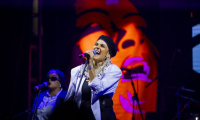


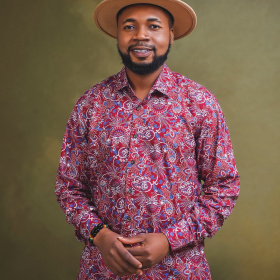

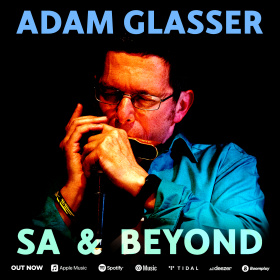

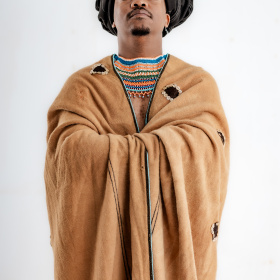







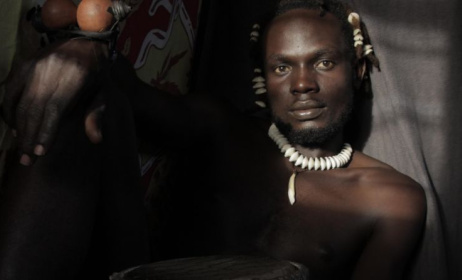


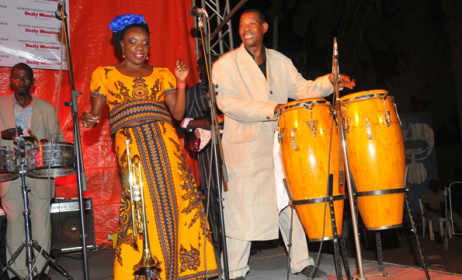




Comments
Log in or register to post comments